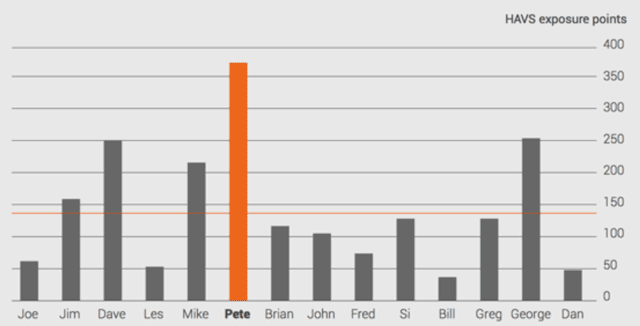The risk of developing the debilitating hand arm vibration syndrome (HAVS) is being routinely underestimated for UK workers, concludes a report produced by wearable technology firm Reactec.

The company analysed data from 4,000 UK tool operators, comparing traditional static risk assessments with data from wearable technology that measured real-time tool use data over nine months. It discovered that for “high risk” individuals – those exposed to vibration from handheld power tools, for example – the risk is being underestimated by an average 76%.
In a second study, Reactec worked with a leading utilities company to conduct an exercise in which 14 operators working in small teams excavated a specific-sized hole using the same tool. The workers were monitored with accurate real-time measurement of time of exposure and vibration magnitude.
Five workers exceeded the “expected risk” level for the activity. One (‘Pete’) had exposure close to the daily maximum allowed by the regulations and six times higher than some of his colleagues. Conventional risk assessment did not predict this risk.

Symptoms of HAVS can take between six months and 20 years to appear, and the condition is irreversible. Symptoms include bouts of vibration white finger, muscle fatigue, and in some cases carpal tunnel syndrome.
More than 2 million workers are thought to be at risk of developing HAVS in the UK. HAVS is the highest reported industrial illness, according to the Health and Safety Executive.
The report concludes that traditional approaches do not appear to be doing enough to address the problem. But wearable technology, such as Reactec’s HAVwear, which has become available since the legislation came into force in 2005, can enable managers to protect their workers by providing more accurate tool use tracking and real-time vibration exposure data for each individual.
Reactec chief executive Jacqui McLaughlin said: “Wearable technology enables employers to comply with the 2005 regulations but also provides an assessment of real tool use. Such data gives unique insights into an individual’s vibration exposure.”
Download the full report at www.reactec.com/hands_up_for_action

